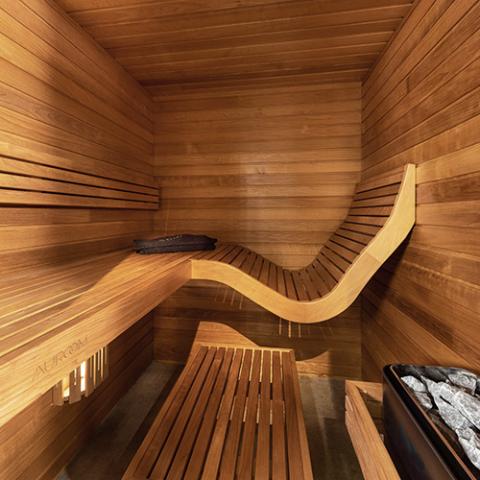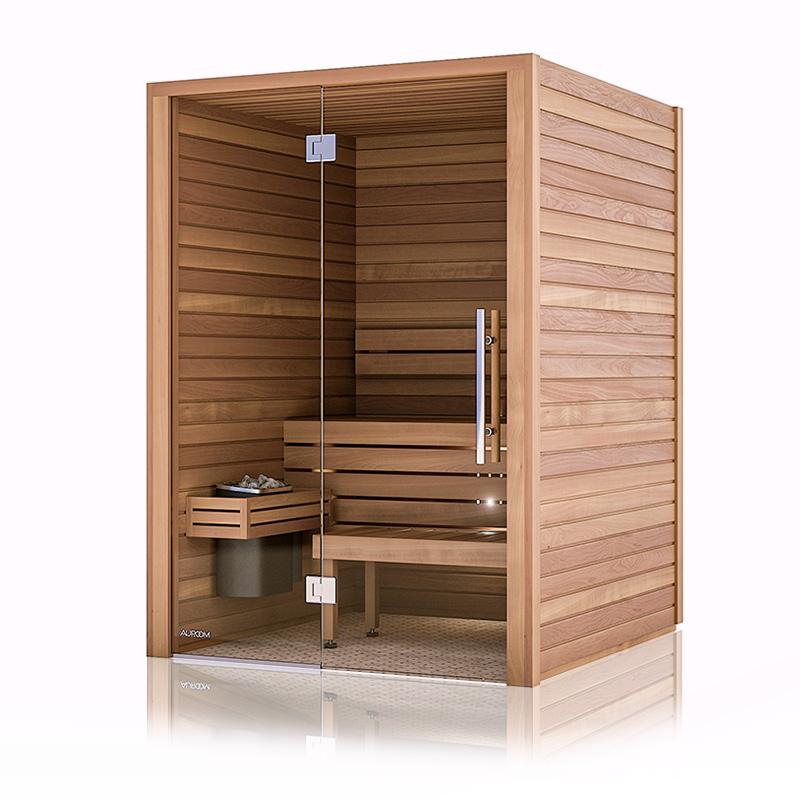All About Traditional Sauna
All About Traditional Sauna
Blog Article
An Unbiased View of Traditional Sauna
Table of ContentsThe Best Guide To Traditional SaunaTraditional Sauna for BeginnersThe smart Trick of Traditional Sauna That Nobody is DiscussingGetting The Traditional Sauna To WorkTraditional Sauna Fundamentals Explained
Power financial savings is one thing to think about for individuals that intend on utilizing their sauna often. For a typical sauna, bathers generally need to wait for 30-40 mins for the area to preheat prior to entering. Infrared saunas, on the other hand, typically reach their suitable temperature in about 15 mins.That implies that in an infrared sauna, bathers can start appreciating their sauna immediately. One distinction between the two kinds of sauna that is often forgotten is the social experience.
Think about how many individuals will certainly be using the sauna before making your choice - Traditional Sauna. Adding a sauna to your home can be among the most amazing and satisfying decisions you'll ever before make. Routine sauna usage will improve your blood circulation, preserve healthier skin, assistance kidney function, reduce blood pressure, boost brain feature, and a lot more
Some Known Factual Statements About Traditional Sauna

Infrared and standard completely dry saunas are both preferred alternatives for those seeking relaxation and therapeutic advantages. There are some vital distinctions in between the 2 kinds of saunas that need to be considered before making a choice. Conventional dry saunas utilize warmed rocks to generate vapor, while infrared saunas make use of infrared heating systems to straight heat up the body.
Aspects such as warmth resistance, wanted degree of detoxing, and total wellness needs to be thought about when making a decision which type of sauna to use. Infrared saunas are a type of sauna that use infrared light to heat the body directly, rather than heating the air around the body like traditional saunas.
The temperature in an infrared sauna is usually reduced than in a traditional sauna, with temperatures ranging from 120F to 150F. Traditional Sauna. Infrared saunas supply a variety of advantages that make them an eye-catching option for those wanting to improve their health and wellness. Some of the benefits of infrared saunas include: Infrared saunas utilize lower temperature levels than conventional saunas, which can make them a lot more comfortable for those who find high temperatures challenging to endure
A Biased View of Traditional Sauna
Infrared saunas have been shown to assist the body get rid of toxins through sweating. Sweating can additionally help to boost skin health and wellness by removing pollutants and dead skin cells.
The heat generated by infrared saunas can help to boost blood circulation and boost circulation. This can assist to lower swelling, promote healing, and enhance general cardio health. Infrared saunas have been shown to help in reducing tension and promote relaxation. This can assist to boost mood, minimize anxiousness, and boost general mental health.

Getting My Traditional Sauna To Work

There are numerous benefits to using a typical completely dry sauna. Here are a couple of: Relaxation: The high temperature and reduced humidity in traditional completely dry saunas can help loosen up the muscle mass and reduce anxiety levels. Cleansing: Sweating in a sauna can aid eliminate contaminants from the body, which can enhance overall health and wellness.
When it comes to saunas, there are 2 major types of heating methods: typical and infrared. Typical saunas make use of heated air to warm up the body, while infrared saunas use infrared radiation to pass through the skin and warmth the body from within. One Read Full Article of the major distinctions between the two methods is the kind of heat they produce.
Standard saunas heat up the air, which after that heats up the body with convection. Infrared saunas, on the other hand, warm the body directly through radiation.
In terms of energy efficiency, infrared saunas are generally a lot more effective than conventional saunas since they need much less power to run. They additionally warm up faster, so they can be made use of for much shorter sessions. When it comes to the results on the body, both kinds of saunas have actually been revealed to have advantages.
Unknown Facts About Traditional Sauna
Infrared saunas have actually been shown to have comparable advantages, along with possibly assisting with detoxing, skin health, and immune function. Overall, the option between a traditional or infrared sauna comes down to personal preference and individual requirements. Typical saunas might be much better for those that choose higher temperatures and an extra extreme sweat response, while infrared saunas might be much better for those who desire a more gentle and reliable heat therapy.
Both kinds of saunas provide one-of-a-kind benefits and downsides that ought to be taken into consideration before choosing. The selection between an infrared sauna and a standard dry sauna mostly relies on personal preference and the desired benefits - Traditional Sauna. Those that favor a more comfy, reduced temperature atmosphere might favor an infrared sauna, while those who are trying to find extreme heat and a conventional sauna experience might favor a traditional dry sauna
Right here are some safety and security suggestions to bear in mind when making use of infrared and conventional completely dry saunas:: Saunas can create extreme sweating, resulting in dehydration. It is vital to consume lots of water previously, throughout, and after sauna sessions to remain hydrated.: It is advised to limit sauna sessions look at these guys to 20-30 mins to web stay clear of overheating and dehydration.
Report this page